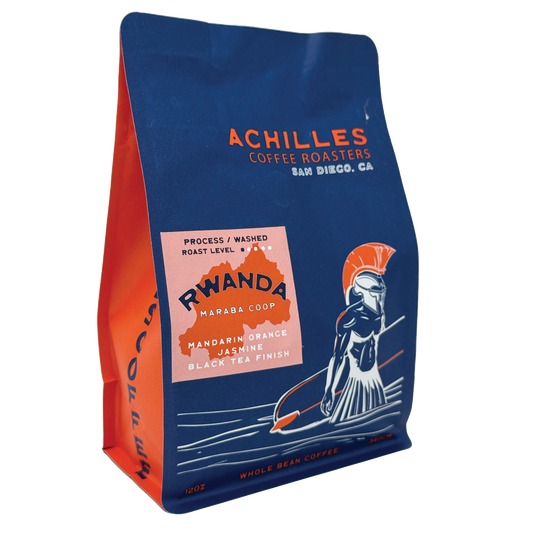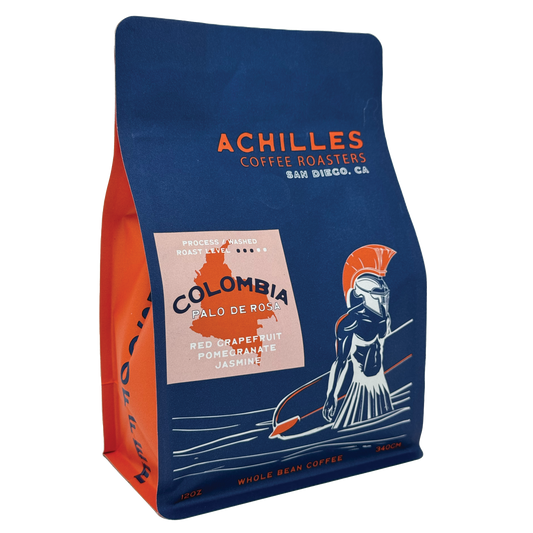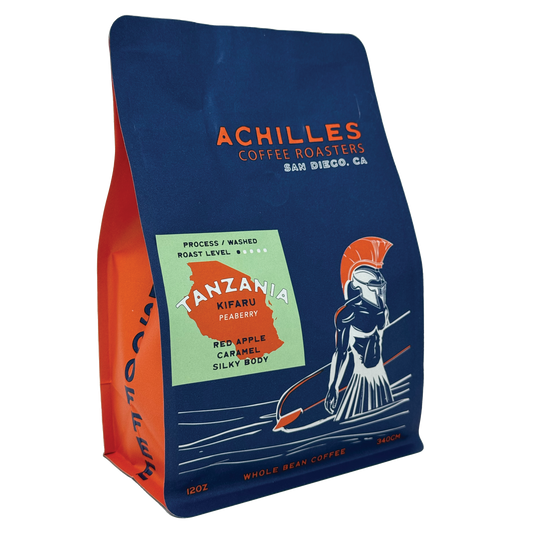For many coffee lovers, the idea of decaf coffee sparks curiosity—or even skepticism. Some dismiss it as “not real coffee,” assuming it lacks flavor or authenticity. Others embrace it as a way to enjoy their favorite beverage without the jitters, late-night sleeplessness, or caffeine crashes that sometimes accompany regular coffee. The truth lies somewhere in between: decaf is far more than just a caffeine-free alternative.
When handled with care, decaf can deliver the same sensory pleasures people seek in coffee—rich, layered flavors, inviting aromas, and the familiar ritual of brewing and sipping. The misconception that decaf always tastes flat or bland often stems from older, low-quality processing methods or from beans that were never given the same attention as their caffeinated counterparts. Today, however, specialty roasters and improved decaffeination processes have elevated decaf into a category of its own, one that deserves recognition and respect.
At its core, decaf is still coffee—grown, harvested, processed, and roasted just like any other bean. The key difference lies in the additional step that removes most of the caffeine. Understanding how this step works, the methods used, and why bean quality is just as important as with regular coffee can change the way you view decaf entirely. For those seeking balance—whether it’s reducing caffeine for health reasons, extending their coffee ritual into the evening, or simply exploring new flavors—decaf offers a genuine and satisfying experience without compromise.
What Is Decaf Coffee?
Decaf coffee begins its journey just like any other coffee—grown, harvested, and processed as green coffee beans. The key difference comes before roasting: the beans undergo an additional step designed specifically to remove caffeine. This process happens while the beans are still green, since caffeine is water-soluble and easier to extract before roasting locks in the bean’s structure.
By definition, decaffeinated coffee must meet strict standards. In the United States, regulations require that at least 97% of the caffeine be removed. In the European Union, the benchmark is even stricter, requiring beans to be 99.9% caffeine-free on a dry basis. What does that mean in your cup? A typical 8-ounce serving of decaf usually contains only about 2–5 milligrams of caffeine, compared to the 70–140 milligrams you’d find in a standard cup of regular coffee.
While decaf isn’t completely caffeine-free, the difference is dramatic. For most people, this reduction is enough to eliminate the jitters, racing heart, or disrupted sleep that sometimes follow caffeinated coffee. This makes decaf an excellent option for those who want to limit caffeine intake due to health reasons, sensitivity, or simply the desire to enjoy coffee later in the day without sacrificing rest.
Understanding this starting point is essential, because it underscores an important truth: decaf coffee is still real coffee. The beans come from the same farms, are processed with care, and can deliver the same sensory pleasures as their fully caffeinated counterparts—provided the decaffeination process and roasting are handled with quality in mind.
How Is Coffee Decaffeinated?
Decaffeination is a careful process, designed to strip caffeine without stripping flavor. Here are the most common methods used today:
1. Swiss Water Process
The Swiss Water Process is one of the most popular and respected methods for creating decaffeinated coffee, especially among specialty roasters and health-conscious coffee drinkers. Unlike some other approaches, this method avoids the use of chemical solvents entirely, relying instead on pure water, carefully controlled temperature, and time to gently remove caffeine from the beans.
How It Works:
Green coffee beans are first soaked in hot water to dissolve both caffeine and flavor compounds. This initial batch of beans is then discarded, but the now flavor-rich water—known as Green Coffee Extract (GCE)—is filtered through activated charcoal. The charcoal filter captures the caffeine molecules while allowing the flavor compounds to remain.
This caffeine-free, flavor-saturated water is then reused with a new batch of green beans. Because the water is already saturated with coffee’s natural flavor compounds, only the caffeine from the new beans migrates out during soaking. This ensures that the beans retain their unique character while the caffeine content steadily drops. The process is repeated until the beans meet the required decaffeination standards.
Flavor Impact:
The Swiss Water Process is celebrated for its ability to preserve origin characteristics and maintain cup quality. The resulting coffee is typically clean and well-rounded, with minimal loss of nuanced flavors. It tends to highlight the bean’s natural sweetness and acidity, making it an excellent choice for those who want decaf that tastes as close as possible to its caffeinated counterpart.
Why It Matters:
Because no chemicals are involved, this method appeals to consumers who prioritize natural processing or worry about chemical residues. Many specialty roasters use the Swiss Water Process to decaffeinate high-quality single-origin coffees, allowing drinkers to experience the true terroir of beans even without caffeine.
2. CO₂ (Carbon Dioxide) Process
The Carbon Dioxide (CO₂) Process is one of the most advanced and effective methods of decaffeinating coffee. It’s particularly valued in the specialty coffee industry because it does an excellent job of removing caffeine while preserving the delicate flavor compounds that make each coffee unique. Unlike some traditional methods, the CO₂ approach is highly selective, meaning it targets caffeine molecules without stripping away the aromatic compounds that give coffee its complexity.
How It Works:
-
Soaking: Green coffee beans are first soaked in water to soften them and open up their cellular structure. This makes it easier for caffeine molecules to be extracted.
-
Pressurized CO₂ Exposure: The beans are then placed in a sealed stainless-steel chamber, where they are exposed to liquid CO₂ at extremely high pressure (typically 250–300 times atmospheric pressure).
-
Selective Bonding: Under these conditions, CO₂ acts as a solvent that selectively binds to caffeine molecules. Unlike chemical solvents, it does not bond significantly with the aromatic oils or flavor compounds.
-
Separation: The caffeine-saturated CO₂ is then transferred to another chamber, where the pressure is released. This allows the CO₂ to return to its gaseous state, leaving behind the caffeine, which can then be collected for other uses (such as in pharmaceuticals or energy drinks).
-
Reuse: The CO₂ is often recycled and reused, making this process more sustainable compared to other methods.
Flavor Impact:
The CO₂ method is highly praised for its ability to preserve flavor integrity. Since the process leaves most of the volatile aromatic compounds intact, coffees decaffeinated this way tend to retain their delicate notes of fruit, florals, and sweetness. The cup profile is remarkably close to that of fully caffeinated beans, with little loss of complexity.
Why It Matters:
Because of its precision and effectiveness, the CO₂ process is often reserved for higher-quality specialty coffees, where flavor preservation is a top priority. It also appeals to health-conscious consumers since it avoids the use of chemical solvents entirely. Though it is more expensive than other methods, many roasters consider it the best option for producing decaf that meets the expectations of discerning coffee drinkers.
3. Solvent-Based Methods (Ethyl Acetate or Methylene Chloride)
Solvent-based methods are some of the most widely used techniques for decaffeinating coffee, thanks to their efficiency and scalability. While the term “solvent” might sound intimidating, it’s important to note that the solvents used in coffee processing are strictly regulated, food-safe, and completely removed before the beans are roasted. These processes have been around for decades and are considered safe by health authorities worldwide.
How It Works
-
Soaking the Beans: Green coffee beans are first soaked in hot water or steamed to open their pores and loosen the caffeine molecules.
-
Applying the Solvent: The beans are then rinsed with a food-safe solvent—either ethyl acetate or methylene chloride—which selectively bonds with caffeine molecules.
-
Caffeine Removal: The solvent carries the caffeine away from the beans while leaving most of the flavor compounds behind.
-
Evaporation and Drying: The beans are heated and dried to remove any residual solvent. By the time the coffee reaches the consumer, no detectable solvent remains.
Types of Solvent Processes
-
Ethyl Acetate (EA) / “Sugarcane Process”:
Ethyl acetate can be derived naturally from fruits or sugarcane, which is why coffee processed this way is often marketed as “naturally decaffeinated.” EA is commonly used in Latin American countries where sugarcane is abundant. Many specialty roasters appreciate this method because it combines efficiency with a “natural” label that resonates with consumers. -
Methylene Chloride (MC):
This is a lab-created solvent that is also widely used in decaffeination. It is highly effective at removing caffeine without stripping away as many flavor compounds. Regulatory bodies like the FDA set strict safety limits, and testing consistently shows that properly processed beans are free of solvent residue.
Flavor Impact
Solvent-based decaf methods are known for producing smooth, mild coffees with a balanced flavor profile. They may mute some of the more delicate or nuanced notes—like florals or bright fruit—but they excel at creating an approachable, consistent cup that appeals to a wide audience. For this reason, solvent-based decafs are common in both commercial and specialty markets.
Why It Matters
While some coffee drinkers shy away from the idea of “chemicals,” solvent-based decaf is safe, efficient, and capable of delivering reliable flavor. For those seeking an affordable and accessible decaf option that still tastes satisfying, this method often provides the best balance of cost, availability, and quality.
Does Decaf Taste Different?
Yes—and no. The reputation of decaf coffee as “flat” or “cardboard-like” often comes from lower-quality beans or poor processing methods. When decaf is handled poorly, much more than caffeine gets removed—delicate aromatic compounds and sugars can be stripped away as well, leaving behind a cup that tastes woody, papery, or one-dimensional.
But high-quality decaf tells a very different story. When specialty roasters start with excellent beans and use careful decaffeination methods, the result can be surprisingly vibrant and enjoyable.
Examples of what good decaf can taste like:
-
A washed Colombian decaf can still be bright and balanced, carrying notes of caramel, citrus, and mild florals.
-
A naturally processed Ethiopian decaf often retains berry-like sweetness, fruit-forward aromatics, and a syrupy body.
The key factor is quality at every stage: the grade of green coffee selected, the processing method used, and the care taken during roasting. Specialty roasters often use Swiss Water or CO₂ decaffeination, which preserve far more of the coffee’s natural flavors compared to harsher methods. The result? A cup that can easily rival its caffeinated counterpart, satisfying coffee lovers who want the full experience without the buzz.
Bottom line: Decaf coffee doesn’t have to taste like an afterthought. When sourced and processed with the same dedication as regular coffee, it can be every bit as flavorful and rewarding.
Why Quality Matters in Decaf
Just because a coffee is decaffeinated doesn’t mean quality can be overlooked. Every step in the journey from farm to cup plays a role in whether your decaf tastes vibrant and satisfying—or flat and lifeless. Here’s why it matters:
1. Bean Origin
High-quality beans maintain more of their unique character after caffeine is removed. A carefully grown Ethiopian coffee, for example, may still showcase berry or floral notes even after decaffeination, while a generic low-grade bean might only produce dull, woody flavors. The terroir, varietal, and farming practices all influence how much “soul” is left in the cup.
2. Processing Method
The decaffeination method has a direct impact on flavor. Cleaner techniques like the Swiss Water Process or CO₂ extraction preserve more of the bean’s complexity, acidity, and sweetness. By contrast, older or chemical-heavy methods may strip away delicate aromatics, leaving behind a muted or papery taste. Choosing decaf from roasters who highlight their processing methods ensures you’re getting quality treatment.
3. Freshness
Decaf ages and stales just like regular coffee. Oils oxidize, aromatics fade, and flavors flatten over time. That’s why roast date matters far more than “best by” labels. Buying freshly roasted decaf, ideally within weeks of the roast date, ensures you’re experiencing it at peak flavor. Stale beans—decaf or not—will never taste as vibrant as fresh ones.
4. Roast Profile
Many specialty roasters take extra care with decaf, adjusting roast curves to enhance sweetness and minimize bitterness. Because decaffeination slightly alters the physical properties of the beans, they often require a tailored approach. Skilled roasting can unlock surprising depth and complexity, while careless roasting can exaggerate flatness or harshness.
5. The Final Result
When decaf is thoughtfully sourced, processed with care, roasted intentionally, and brewed properly, it can stand shoulder to shoulder with any caffeinated coffee. For many drinkers—whether avoiding caffeine for health, lifestyle, or preference—quality decaf offers the chance to savor coffee’s comfort and richness without compromise.
Takeaway
Quality in decaf coffee isn’t optional. It’s what separates a lifeless cup from one that surprises even skeptical drinkers with depth, sweetness, and balance. Paying attention to origin, processing, freshness, and roasting ensures decaf delivers on its promise: all the flavor, none of the buzz.
Who Should Drink Decaf Coffee?
Decaf coffee isn’t just a fallback option for people who “can’t handle” caffeine—it’s a smart, intentional choice for many different kinds of coffee drinkers. Because modern decaffeination techniques allow coffee to retain much of its flavor, decaf can fit seamlessly into your lifestyle without sacrificing taste.
Here are some of the main groups who benefit from it:
-
Evening Coffee Drinkers
For those who love the ritual of coffee after dinner or late at night, decaf is the perfect solution. It delivers the same warmth, aroma, and satisfaction of regular coffee without interfering with your sleep cycle. Instead of staying awake from a late-night caffeine kick, you can enjoy a cup purely for comfort and flavor. -
Health-Conscious Consumers
Some people reduce or eliminate caffeine for medical or dietary reasons. High caffeine intake can contribute to issues such as anxiety, high blood pressure, digestive discomfort, or disrupted sleep. Decaf provides a way to continue enjoying coffee while protecting overall wellness and aligning with health goals. -
Pregnant and Breastfeeding Individuals
Medical guidelines typically recommend that pregnant individuals limit their caffeine intake. Decaf offers a safer alternative, allowing them to still enjoy coffee’s taste and ritual without exceeding recommended limits. This makes decaf an important option for those looking to maintain balance during pregnancy or nursing. -
Avid Coffee Lovers
For serious coffee drinkers, caffeine tolerance can be a real concern. If you love the ritual of multiple cups throughout the day but want to avoid the jitters, afternoon energy crashes, or disrupted sleep, decaf allows you to keep sipping without overloading on caffeine. Many enthusiasts mix regular and decaf throughout the day for balance. -
Sensitive to Caffeine
Some people are simply more sensitive to caffeine’s effects than others. Even a single cup of regular coffee might bring on restlessness or nervous energy. Decaf provides a way to enjoy the flavors and aromas of coffee while minimizing or eliminating unwanted side effects.
Tips for Brewing Better Decaf
Grind Fresh Every Time
Whole-bean decaf coffee retains flavor and aroma far better than pre-ground. Grinding right before brewing minimizes exposure to oxygen, which can dull sweetness and complexity. Because decaf beans can sometimes be more fragile due to the decaffeination process, a burr grinder helps ensure consistent grind size and better flavor extraction.
Adjust Your Brew Ratio
Some decaf coffees can taste a little lighter or less intense compared to their caffeinated counterparts. To balance this, experiment with your coffee-to-water ratio. Increasing the dose slightly—say, 1–2 extra grams of coffee per cup—can boost body and enhance sweetness without creating bitterness. Small tweaks make a big difference in decaf.
Experiment With Brewing Methods
Different brewing methods highlight different aspects of decaf coffee:
-
Pour-over brewing brings out clarity and brightness, perfect for decaf beans with fruity or floral notes.
-
French press emphasizes body and richness, giving decaf a fuller, more indulgent mouthfeel.
-
Espresso can produce a bold, concentrated decaf shot that pairs beautifully with milk.
-
Cold brew makes decaf smooth, sweet, and low in acidity, ideal for hot weather.
Pair Thoughtfully With Food
Because decaf often has a mellow, smooth profile, it pairs exceptionally well with desserts and baked goods. Chocolate, nutty pastries, and buttery croissants complement the gentle sweetness of decaf, while fruit-based desserts highlight its subtle acidity. Pairing decaf with food elevates both the drink and the dish, making it an ideal choice for after-dinner coffee service.
Mind Water Quality and Temperature
Just like with regular coffee, water quality makes a huge difference. Use filtered water heated between 195–205°F (90–96°C) for optimal extraction. This prevents under-extraction, which can make decaf taste flat, and over-extraction, which can exaggerate bitterness.
Final Thoughts: Decaf Coffee Is Real Coffee
Decaf coffee has evolved far beyond the dull, uninspiring brews many people remember from decades past. Thanks to advancements in decaffeination methods, sourcing practices, and roasting techniques, today’s decaf can rival its caffeinated counterpart in complexity, sweetness, and overall enjoyment. It’s no longer just a fallback for those avoiding caffeine—it’s a legitimate choice for anyone who wants to savor coffee’s depth of flavor without the jitters.
Whether you’re reducing caffeine for health reasons, avoiding late-night restlessness, or simply exploring new ways to enjoy coffee, decaf offers a pathway to rich, aromatic, and comforting cups at any time of day.
What to Look for When Buying Decaf
If you want to ensure your decaf experience is as satisfying as possible, pay attention to these key details:
1. Decaffeination Method
Look for transparency about whether the beans were decaffeinated using water, CO₂, or sugarcane/ethyl acetate. Cleaner methods like Swiss Water or CO₂ tend to preserve more of the bean’s natural complexity.
2. Roast Date
Freshness matters just as much for decaf as it does for regular coffee. Always look for a clearly printed roast date rather than just a “best by” date. Aim to brew within a few weeks of roasting for peak flavor.
3. Bean Origin and Processing
Just like caffeinated beans, decaf reflects its origin and processing style. A Colombian washed decaf might highlight caramel and citrus, while a natural-processed Ethiopian decaf could showcase berry-like sweetness and floral aromatics.
Why Quality Still Matters
Choosing thoughtfully sourced and freshly roasted decaf ensures you’re not sacrificing flavor for function. Specialty roasters who invest in quality beans and careful processing deliver decaf that stands up to scrutiny from even the most passionate coffee enthusiasts.
In short: decaf is no longer an afterthought. With the right knowledge and a bit of curiosity, you can discover decaf coffees that surprise you with their richness, nuance, and comfort—making them worthy of a permanent spot in your daily ritual.








